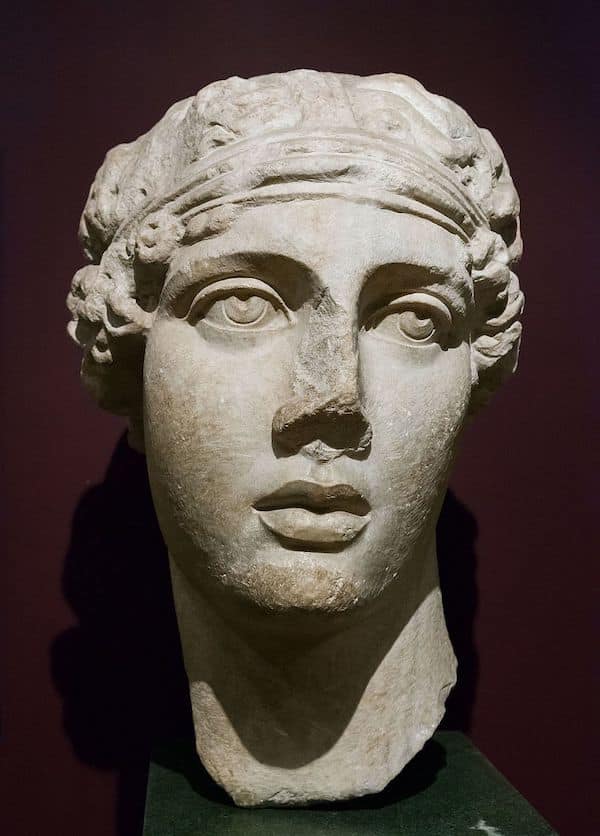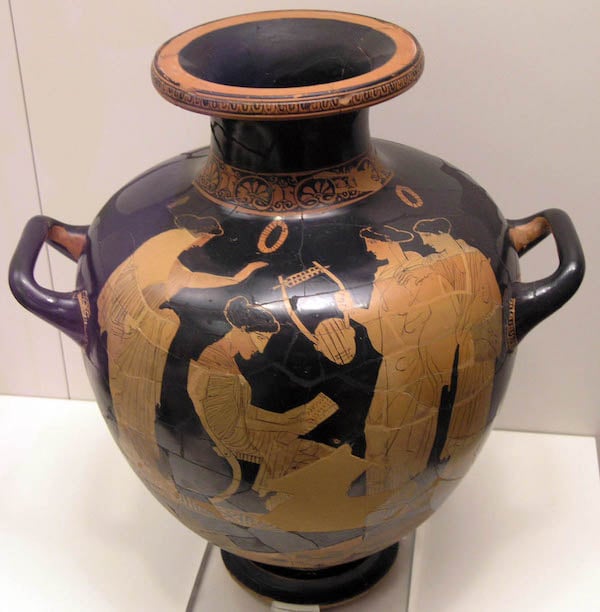Introducing SAPPHO, this month’s feature in our Somebodies series! Another woman author from ancient times (see Enheduanna for our first such feature), Sappho is best known for her fragmented lyric poetry. Lyric poetry was written to be accompanied by music, so if she were alive today, we might know her as a famous lyricist for our favorite bands! Even in her time, Sappho was regarded as one of the best poets alive.

As usual with the people in this series so far, little is known about Sappho’s life. We know she was born to a wealthy family in Lesbos, an island in the Aegean sea near Greece and Turkey, and sources tell us she had three brothers. Two of these brothers, Charaxos and Larichos, are named in a poem fragment attributed to Sappho that was discovered in just 2014.

As with the “Brothers Poem,” most of Sappho’s poetry has only survived in fragments, the one exception being her “Ode to Aphrodite,” which was preserved from ancient times. However, Sappho is thought to have been extremely prolific, composing up to 10,000 lines of verse. Interestingly, Sappho’s name has been delineated to her own poetic form, called a Sapphic stanza. While Sappho used many forms of poetry, this type is what she is most known for. It consists of a verse with four lines, carefully metered and unrhymed, and has been mimicked since the Middle Ages.

Sappho’s work has been regarded as important ever since it was written. However, in more modern times, much of the discussion around her work has centered around her personal life. She is currently a well known symbol for love and desire between women and, indeed, scholars have exchanged many ideas and interpretations about Sappho’s sexuality from her work and from the legends and history surrounding her life. Even so, as with the best writers and artists, her work has transcended this debate and has stood the test of time because of the truth, goodness, and beauty it contains.
According to history, Sappho’s family were exiled from their home on Lesbos when Sappho was about thirty years old. Though circumstances surrounding this exile are, as with much else, unclear, it may have been because of her family’s participation in political conflicts with factions on the island. The family is said to have moved to Syracuse, Sicily. According to legend, about thirty years later, Sappho is said to have died by leaping from the cliffs from yet another island around Greece, called Leucadia, due to unrequited love for a ferryman called Phaon. Though most scholars believe this incident now to be ahistorical, it served to heighten the legends surrounding Sappho and her passionate love poetry and to put her amongst the ranks of Dido, Socrates, and others as suicides in antiquity.
Whatever Sappho’s life or death contained, her wisdom lives on. The quotation for today was chosen for its direct connection to our theme this year: all aboard in pursuit of the good, the true, and the beautiful. Sappho’s words here remind us that beauty need not always be grand or glorious. In fact, sometimes the most beauty we can find is in the ones we love—family, good friends, our students and families, and more. Even if our loved ones sometimes drive us crazy, we encourage you to remember their beauty today!

Don’t forget to check out our Instagram stories for our free smartphone wallpaper, or download below!





















2 thoughts on “SLOCA Somebodies: Sappho”
What a lovely post– sensitive and inspiring.
Sage Theule has found some very inspiring Somebodies this year!